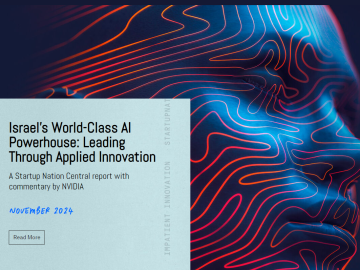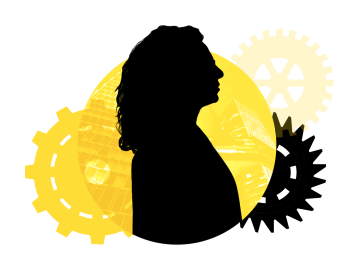Generative AI and open talent platforms are reshaping the staffing industry, driving innovation, and … [+]
cottonbro studio
While open talent platforms have been at the forefront of transforming the staffing industry, another force is quietly—and rapidly—redefining the future of work: generative AI. What was once seen as a tool for automating repetitive tasks has evolved into a powerful technology capable of far more than we could have imagined just a few years ago. Generative AI drives innovation across industries, from content creation and design to complex strategic decision-making.
In staffing, generative AI is set to revolutionize how we identify, engage, and manage talent. AI-driven platforms can sift through vast amounts of data, predict future talent needs, identify skills gaps, and match candidates to roles with a level of precision previously unthinkable. This capability is not just a luxury in today’s fast-paced business environment—it’s a necessity. The demand for specialized skills, particularly in AI-related fields, is outpacing supply at an unprecedented rate. Projections suggest that by 2025, the tech industry could generate up to 150 million new jobs globally, with a significant portion requiring advanced AI skills.
Yet, the implications of generative AI extend far beyond talent matching. As AI takes over routine tasks such as resume screening and initial candidate assessments, staffing professionals will shift from administrative functions to more strategic activities. This transition presents an opportunity—and a challenge. In the short term, it is not AI alone that will replace jobs; rather, human workers effectively leverage AI to outperform and replace those who do not. Combining human intuition and AI-driven insights creates a powerful synergy that enables these workers to deliver superior results faster and more efficiently than ever before.
However, looking further into the future, the trajectory of AI suggests that what we are seeing now is just the beginning. As generative AI continues to evolve and synthetic labor becomes more sophisticated, we may eventually reach a point where AI not only augments human work but fully automates it in specific domains. This long-term shift could significantly reduce the need for human labor in various sectors, with synthetic labor taking over tasks that were once thought to require uniquely human skills.
The Future of Staffing: Integrating Open Talent and Generative AI
Looking ahead, the convergence of open talent models and generative AI will define the future of staffing. Organizations that embrace these technologies will be better positioned to build agile, resilient, and innovative workforces. However, achieving this integration will require a fundamental rethink of traditional staffing models.
The business landscape is increasingly characterized by a global talent shortage, particularly in fields such as technology and AI. Traditional staffing models, reliant on linear and top-down hiring processes, are simply not equipped to meet the evolving demands of today’s workforce. Companies must pivot to open talent platforms, which provide access to a global pool of highly skilled professionals who can be engaged on a project basis. This model accelerates the hiring process and allows companies to scale their workforce dynamically and cost-effectively.
Generative AI will play a crucial role in this transformation. AI-driven platforms will support continuous learning and development within the workforce by enabling more accurate and efficient matching of talent to roles. In the short term, this AI-driven, skills-based approach will help organizations better align their talent strategies with business objectives, ultimately leading to a more competitive and future-ready workforce. However, in the long term, as AI technology advances, the staffing industry may need to confront the reality of synthetic labor displacing human workers altogether in certain areas.
Five Strategies for Staffing Companies to Prepare for an Open Talent and Generative AI Future
Embrace a Blended Workforce Model
To stay competitive, staffing companies must move beyond the traditional full-time employee model and embrace a blended workforce that includes full-time employees, freelancers, and AI-driven capabilities. This approach allows for greater flexibility, enabling organizations to dynamically scale their workforce based on project needs and market demands. Staffing companies should invest in platforms that facilitate seamless integration between human and AI resources, creating a cohesive and adaptable talent ecosystem.
Invest in AI-Driven Talent Platforms
AI-driven platforms are no longer just an optional tool—they are becoming a critical component of effective talent management. Staffing companies should prioritize investments in AI technologies that streamline talent acquisition, from sourcing to onboarding. These platforms should be capable of identifying the best candidates for a role and predicting future talent needs and skills gaps. By leveraging AI, staffing companies can enhance their efficiency, reduce time-to-hire, and improve the overall quality of candidate matches.
Develop Expertise in AI and Data Analytics
As AI becomes more integrated into staffing processes, the need for AI and data analytics expertise will grow. Staffing professionals must upskill to understand the capabilities and limitations of AI, ensuring they can effectively collaborate with AI-driven platforms. This expertise will enable staffing companies to interpret AI-generated insights, make informed decisions, and provide value-added services to clients. Investing in training programs and partnerships with AI experts will be crucial in building this expertise.
Cultivate a Culture of Continuous Learning
In an AI-driven future, the skills required for success will continually evolve. Staffing companies must cultivate a culture of continuous learning within their own organizations and for the talent they manage. This means encouraging ongoing professional development, offering training in emerging technologies, and fostering a mindset of adaptability. By promoting continuous learning, staffing companies can ensure their workforce remains relevant and capable of meeting the challenges of tomorrow.
Establish Strategic Partnerships
To fully leverage the benefits of open talent and generative AI, staffing companies should establish strategic partnerships with leading AI firms, talent platforms, and educational institutions. These partnerships can provide access to cutting-edge technologies, specialized talent pools, and advanced training resources. By collaborating with industry leaders, staffing companies can stay ahead of trends, offer innovative solutions to clients, and position themselves as pioneers in the evolving staffing landscape.
The staffing industry is at a pivotal moment. The convergence of open talent platforms and generative AI is not just a technological shift—it’s a fundamental redefinition of how work gets done. For staffing companies, the future holds immense opportunities but also significant challenges. In the short term, those who harness AI will have a competitive edge, replacing less efficient human workers who do not leverage these tools. However, looking further ahead, the rise of synthetic labor may eventually displace human workers in some areas altogether.
For staffing companies, preparing for this future means embracing these changes and adapting their strategies accordingly. The future of staffing is about more than just filling roles; it’s about creating a dynamic, skills-based workforce that can adapt to new challenges and opportunities with agility and precision. By embracing open talent and generative AI, staffing companies can unlock new levels of efficiency, innovation, and competitiveness, building a truly prepared workforce for the complexities of the 21st-century economy.



